The author opened with an anecdote. It was League of Ireland related. A reminisce back to childhood and to Glenmalure Park to watch Shamrock Rovers at their old ground in Milltown.
It was apt for the assembled audience, relevant, paying tribute to Pat Dunne on the day of the former Ireland goalkeeper’s funeral and it linked the League of Ireland to Manchester United.
Declan Conroy had my attention.
And so began the presentation of the SSE Airtricity League Consultation Process 2015.
Conroy started by outlining some of the things that he thought were positive about the league and felt that there was great passion and tradition within the league with excellent work from volunteers throughout the country.
The development of the Under-19 and Under-17 leagues were also a positive step, while football quality was good – his words, not mine - as were some facilities.
And so it continued, as Conroy highlighted what he believed were the most important findings of the report, outlining the roles and responsibilities of the clubs, the FAI and all the league’s stakeholders, before talking in depth about the sustainability of the clubs – a word that would become a key theme throughout the remainder of the presentation.
The presentation then took us through an interesting outline of the current operating structures and financing of the league, followed by some marketing talk about how “the SSE Airtricity League brand is one the most recognised in the country (and) the League was regarded as providing exceptional media value in sponsorship terms. Yet the League suffers from a certain negativity that dominates.”
Another big emphasis was the need for club’s to work on their business model as Conroy claimed, that no club could show him their long-term plans.
“The issue of sustainability revolves significantly around governance and structures; commercial acumen and community and stakeholder management as much as on-field success,” says Conroy in the report.
And this is where the report focuses much of its energy, as Conroy believes that if all of these things are implemented and prioritised, it will lead to a better league with more people attending and better players plying their trade within the league.
To Conroy’s credit, there is no doubt that the report is a very comprehensive piece of work, offering a fair reflection of the current state of the League of Ireland.
And the author must also be commended for the lengths he undertook to compile this information, as he outlines that a total of 98 separate interview sessions were conducted, including 20 club meetings and 78 separate individual meetings, face to face.
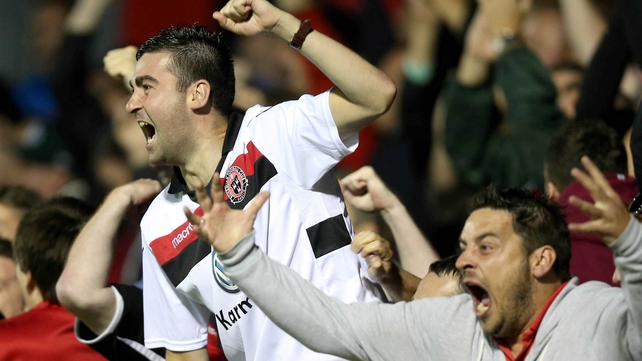
There were contributions from 1,774 supporters and members of the public via online surveys and questionnaires and there were also a number of informal discussions held with members of the wider football family, including the FAI, the managers, players and members of the media.
But looking around that Castleknock Hotel conference room yesterday, there was a real sense that Conroy was preaching to the converted.
The thing with the League of Ireland stakeholders is that they know the League of Ireland inside-out. And the report really does not contain anything new or ground-breaking. In fact, it just raised issues, perhaps lingering from the Genesis report, which was not even mentioned in this “forward looking” volume.
The thorny issue of league prize-money surfaced midway through the presentation, and I’m sure it was not part of Conroy’s job to make us laugh, however, I found myself quietly chuckling as he focused more on percentages and the disparity between finishing first and last in the league.
Conroy didn’t want to see the top clubs getting the “massive money”, as he put it.
Let’s just remind ourselves what the champions get for winning the League of Ireland.
Dundalk will get a meagre €100,000 for winning this year’s championship for finishing top of the pile after their 33-game, season-long endeavours.
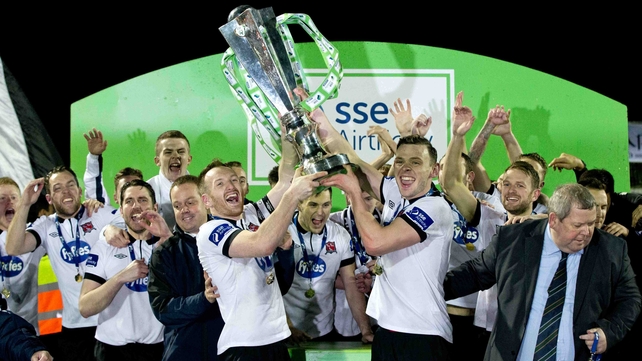
Five years ago, the champions were awarded €250,000, so how Conroy could say that with a straight face was beyond me, considering UCD earned €410,000 (according to the report) for their brief dalliance in the Europa League this season – a tournament that they only qualified for due to their Fair Play status.
Conroy does advocate an increase in prize-money, but as with much of the report, the finer details and figures are conveniently omitted.
As was the case when he spoke of costs to run the league, television money and sponsorship revenue.
Conroy also throws out a figure that the overall turnover from the 20 clubs hit €13million last season, yet there appeared to be no interest to break down that figure to show which clubs were providing the most revenue to the game.
Asked afterwards about the number of clubs and whether it was his opinion that some clubs were damaging this much-discussed league brand, Conroy opted for the politician’s answer saying “there are 20 clubs competing in the league, all do certain things well, while every club has the ability to improve”.
The same presentation was given to these 20 clubs on Monday night and while Conroy appeared to feel that there was a positive mood in the room, it remains to be seen what the clubs will actually make of the findings. Perhaps he mistook courtesy for goodwill.
I cannot imagine that clubs like Shamrock Rovers, Cork City, Derry City and Bohemians need constant reminding of the need to keep an eye on their incomes and expenditures, considering the turmoil that those clubs, and many others besides, have come through in the past decade.
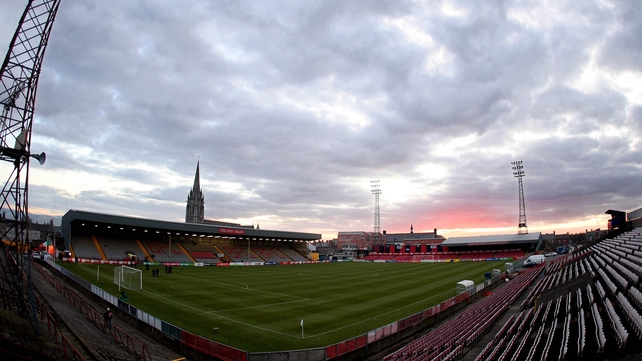
Neither do Sligo Rovers nor St Patrick’s Athletic need to be lectured on doing more in the community. Rovers are the only show in town when you pound the streets of Sligo, with virtually every small business and town hostelry involved in some way with the club.
Likewise, St Pat’s have at least 20 years under their belt of working within the Inchicore-Ballyfermot community, with many other clubs already very active in their respective catchment areas.
But Conroy’s intentions are, it appears, genuine. He wants a better league with better players, with more people attending and finer facilities.
It is just that the report appears to be lacking ambition; in fact, it reads more like a survival guide for the league. Survival might be fine for some clubs but most clubs and fans want to dream. And so they should.
The potential of the League of Ireland has been bubbling away since the crazy-wages days of the Celtic Tiger with Shelbourne and Drogheda coming close to progressing to the top table of European football.
Shamrock Rovers finally made the breakthrough in 2011 as they qualified for the Europa League group stages, and Dundalk certainly looked more than a match, at times, in this year’s Champions League clash with BATE Borisov – a team that beat Roma in last night’s group stage encounter.

But there was no talk of this from Conroy. In fact, he almost warns clubs against trying to follow their European ambitions, as it can lead to overspending and ultimately would threaten the league’s sustainability.
So there is no doubt that Conroy spoke to a lot of people, but did he talk to the right people? As mentioned, there is nothing really new that came out of his report that any league stalwart couldn’t have told him at any stage over the past five years.
Even Conroy’s “innovative” ideas, like developing a showcase day at the Aviva Stadium involving some of the top clubs was mooted well over a year ago by our own Alan Cawley in one of his insightful League of Ireland columns on RTE.ie.
And Conroy’s only talk of the league’s coefficient – the real gauge of how a league is performing amongst its UEFA counterparts – is a mere mention, as he just lists it as being 41st out of 54 countries, with no thoughts or insights as to how that number might be improved.
Surely a worthwhile and progressive exercise would have been to take a look at the leagues ten places above Ireland, which includes the not-so-mighty Iceland, FYR Macedonia and Liechtenstein, and see how the Irish league could improve its standing.
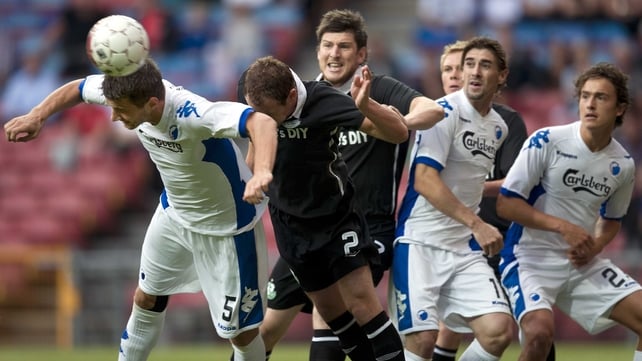
Another seemingly obvious venture would be to take a look at leagues from similar sized countries and see how they operate, and what might be replicated in the League of Ireland.
“That wasn’t part of my remit,” said Conroy.
So what was his remit?
“At the outset of the current 2015 season, I was asked to consult primarily with the clubs and the FAI as well as other stakeholders to seek their views on how the clubs and the League currently operate and also to seek opinions on how both could move forward. The timing was opportune given the merger agreement runs until the end of the 2016 season,” writes Conroy in his report.
From reading that, you might think that the author’s remit could stretch as far and as wide as he wished, however, he chose not to.
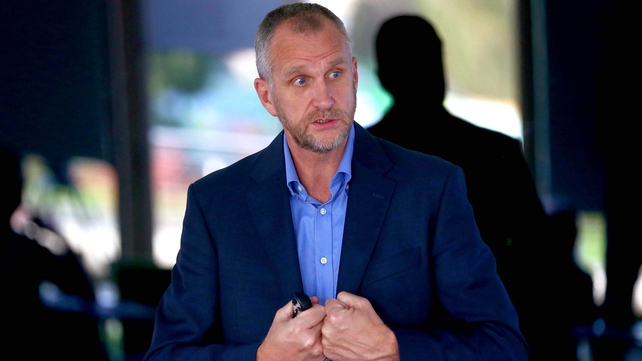
Conroy did, however, mention that he consulted with Colorado Rapids about the franchise format of the MLS but tries his best to steer clubs away from such a selection, instead advocating his preferred option, which would see the creation of a ten-team, two division re-branded and re-launched League from 2017-2020.
The report is an independent piece of work, but Conroy has well-known links to John Delaney and the FAI, having been involved in the successful EURO 2020 bid.
And Conroy would not divulge what the FAI chief executive had to say about his “problem child” the League of Ireland, as it would breach his confidentially clause.
“I have both respected individual confidentiality and also tried largely to avoid being club specific in my reporting. I believe highlighting an individual club’s issues could be interpreted as either unfair, biased and/or potentially pointed,” said Conroy.
Delaney’s predictable opinion would arrive in a press release later on Tuesday afternoon.
The FAI chief called it “the most comprehensive and thorough review of senior domestic football in Ireland”.
“We now look forward to working with the clubs to agree a process to discuss the consultation document in detail, and the Association will be writing to the clubs this week to establish a timetable to move forward,” added Delaney.
The clubs will ultimately decide how much, if any, of this report gets to see the light of day. But as mentioned, the merger agreement has only one season to run so it is time that the clubs started working together and in a collective and constructive manner as big decisions need to be made.
One of the main things that Conroy wants to happen as a result of the report’s publication was that he was hoping that it would start a conversation.
Well, we’re listening. Let’s talk.


